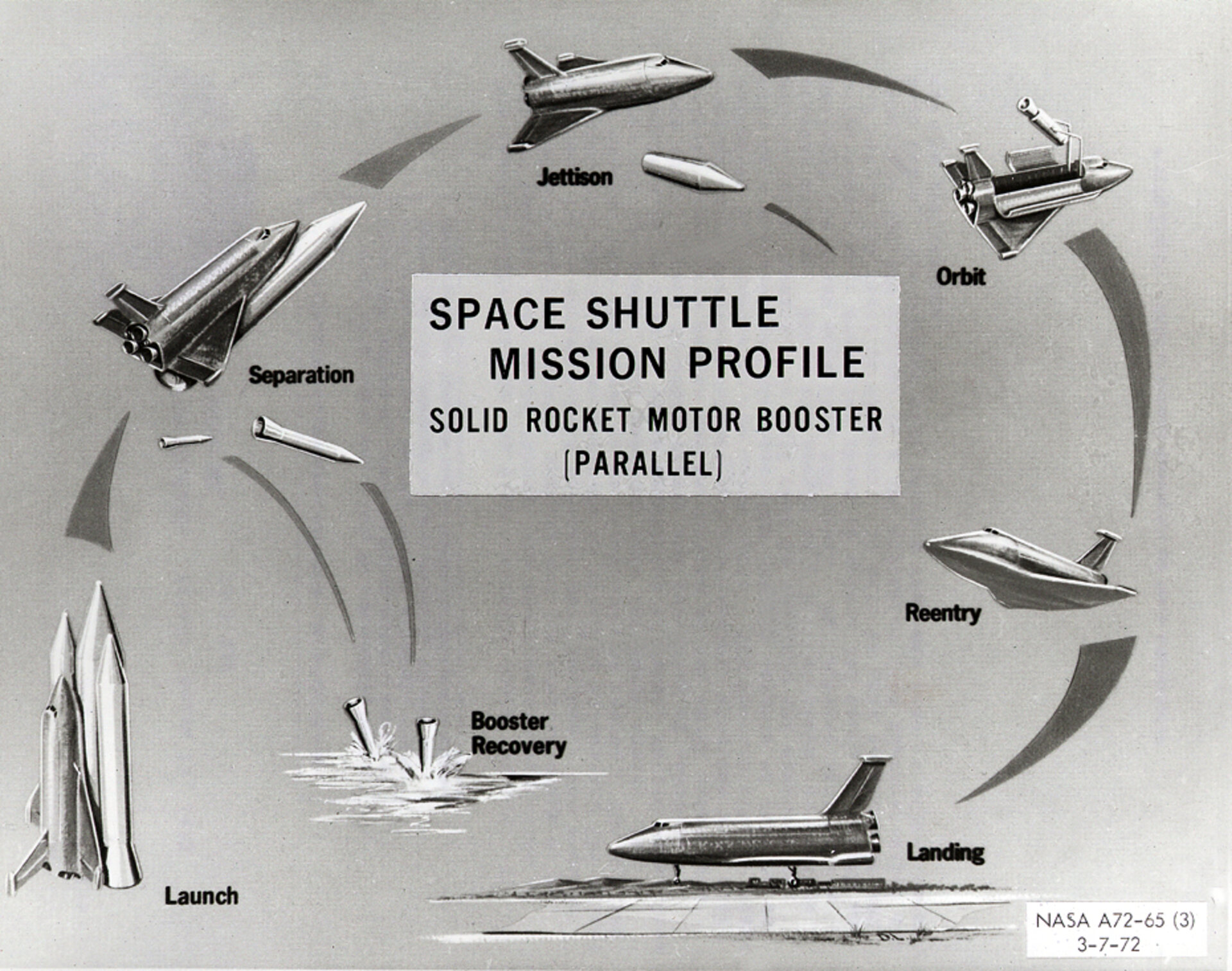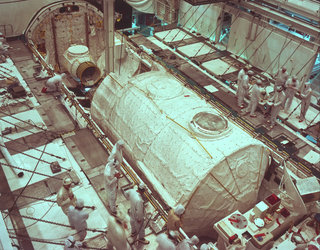Space Shuttle timeline
The Space Shuttle flight era lasted from 1981 to 2011 but its roots lie deep in the 1960s. Many ambitious plans for spaceplanes with airliner-type operation were proposed but the result was inevitably a compromise: an extraordinary vehicle that could have been even better.
1950s
NACA (NASA’s predecessor) studies with US Air Force flying at high altitudes and supersonic speed with X-15 research aircraft and plans the X-20 development vehicle capable of spaceflight. The X-20 was not built, but led to study of ‘wingless’ aircraft and 'lifting bodies'.
Mid-1960s
Several studies of reusable spaceplane designs.
1969
The Space Task Group was formed by President Richard Nixon to evaluate designs and to recommend a national space strategy. The goal was a common strategy for NASA, the Department of Defense, and commercial and scientific users.

Early 1970s
After weighing the best Shuttle design against development and operating costs, a system consisting of a reusable winged orbiter, reusable solid rocket boosters and an expendable external tank was chosen. This was less technically ambitious than earlier fully reusable designs, but also less costly to build.
1972
The Shuttle programme was formally launched by President Nixon.
North American Aviation (now Boeing Company) was selected as the prime contractor, including responsibility for the Orbiters. The contractor for the Solid Rocket Boosters was Morton Thiokol (now Alliant Techsystems). The External Tank contract was given to Martin Marietta (now Lockheed Martin). The ambitious main engines were developed by Rocketdyne (now Pratt & Whitney Rocketdyne).
24 September 1973
The Spacelab Memorandum of Understanding was signed in Washington DC between ESRO and NASA.

18 February 1977
First flight. Space Shuttle Enterprise remained attached to the Shuttle Carrier Aircraft throughout flight.
12 August 1977
First free flight; Enterprise.
26 October 1977
Final free test flight.

12 April 1981
First orbital test flight STS-1; Columbia.
11 November 1982
First operational flight, first mission to carry four astronauts, STS-5; Columbia.
4 April 1983
First flight of Challenger.
28 November 1983
Spacelab 1 mission with ESA astronaut Ulf Merbold.
30 August 1984
First flight of Discovery.
29 April 1985
Spacelab 3 mission.
29 July 1985
Spacelab 2 mission.
3 October 1985
First flight of Atlantis.
30 October 1985
Spacelab D1 mission with ESA astronaut Wubbo Ockels and DLR astronauts Reinhard Furrer and Ernst Messerschmid (largest crew flown to date, 8 people).
28 January 1986
Loss of Challenger 73 seconds after launch; all seven crewmembers died.
29 September 1988
First post-Challenger mission; Discovery.
4 May 1989
Magellan Venus orbiter launched from Atlantis.

24 April 1990
Launch of the Hubble Space Telescope; Discovery.
22 January 1992
Spacelab IML-1 mission with ESA astronaut Ulf Merbold.
24 March 1992
Spacelab ATLAS-1 mission with Belgian astronaut Dirk Frimout.
7 May 1992
First flight of Endeavour.
31 July 1992
STS-46 mission with ESA astronaut Claude Nicollier and ASI astronaut Franco Malerba.
26 April 1993
Spacelab-D2 mission with DLR astronauts Ulrich Walter and Hans Schlegel.
3 November 1994
Spacelab ATLAS-3 mission with CNES astronaut Jean-Francois Clervoy.
22 February 1996
STS-75 mission with ESA astronauts Maurizio Cheli and Claude Nicollier and ASI astronaut Umberto Guidoni.
20 June 1996
Spacelab LMS mission with CNES astronaut Jean-Jacques Favier.
19 November 1996
Longest Shuttle mission: 17 days, 15 hours; Columbia.
4 December 1998
First ISS mission; Endeavour.

1 February 2003
Loss of Columbia, vehicle disintegrated during reentry; all seven crew members died.
25 July 2005
First post-Columbia mission; Discovery.
24 February 2011
Last flight of Discovery.
16 May 2011
Last flight of Endeavour.
8 July 2011
Last flight of Atlantis and last Shuttle flight (planned).








